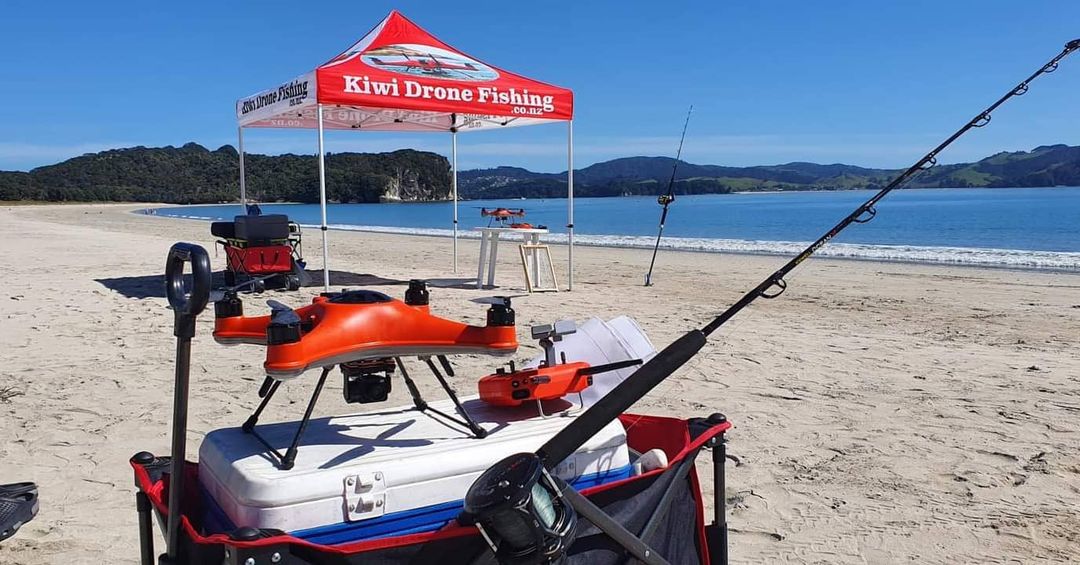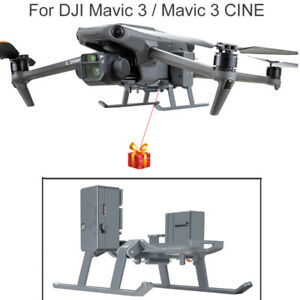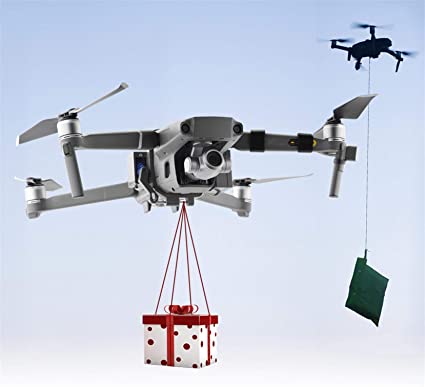
You can use a drone to see the waters surrounding your property if a fisherman is an avid one. There are many features that drones have, such as a mechanical payload release and an angle adjustable camera, GPS positioning, and a GPS receiver. You can also buy fishing lines that you can use for fishing, which are designed to be extremely stable and secure. One example of such a drone is the SKY RIGGER.
SKY RIGGER, a drone fishing line, is available
The SKY RIGGER, a flexible fishing system for drones, allows you fish from the air using minimal effort. The system features two rotating leg clamps that can attach to various drone models. The release mechanism is designed with a bayonet-style connection and a cam-lock arm to open the line clamps quickly. Sky RIGGER is unlike other drones and can be used for all types of fishing.
The SKY RIGGER has an automatic release mechanism for when a fish strikes your fly. The line can be manually released by either your rod or hand. This feature can be found on all models. Before purchasing the new SKY RIGGER, it is recommended to purchase a Phantom 3. Here are some pros & cons of the new line.
It comes with a mechanical payload.
A good drone's mechanical payload release is one of its most important characteristics. Many are designed to make it easy for anglers to remove their fishing line. Some models have no release mechanism. Instead, users must "yank the fishing line" to free the drone. This can be an inconvenient process, especially for people who aren't comfortable using their hands to release the line.

Another important feature is its payload release mechanism. Payloads should be capable of releasing the drone's line once the fish has been caught. Catch and release fishing is a skill that should be practiced before you attempt it. Many people have had good experiences with the DJI Phantom drone. However, this technology is not yet comparable to other fishing drones.
It features a GPS positioning device
Rippton is an Australian-Dutch joint venture that specializes technology-oriented products for fishing. It was founded to improve the success rate of anglers by creating products that increase the enjoyment of fishing. Rippton's Mobula drone has a GPS positioning system as well as a remote release. The Mobula can hold bait at the surface, provide resistance to kite clips, and be environmentally friendly.
It is lightweight at just 3 pounds and can fly up to 18 minutes. It is also equipped with a high-tech GPS system that allows it to control it from up to 2,000 yards away. It has an operating range of 1000m (or half a mile) and intelligent flight modes. Its point of interest feature lets it take high-quality images of its surroundings. You can enjoy stunning views of fish through its high-resolution lens.
It includes a failsafe safety feature
Aerokontiki's drone fisherman has a failsafe feature. It monitors the battery level, and releases the line when it is needed. If the battery is dead, the drone will automatically return to dry ground and resume its mission. It can be operated anywhere with its industrial-grade flight control system. You can use this drone even in very difficult water conditions.

FAQ
What laws are there regarding drones flying?
The Federal Aviation Administration (FAA), in the United States, regulates all aspects related to drone operations. To operate a drone commercially, you must first get a certificate from the FAA. Next, you will need to complete a course in flying skills and pass an exam. The agency will require you to pay a fee.
What type of batteries can a drone use to charge its batteries?
Drones are powered by lithium-ion battery. A typical drone consumes between 3 and 6.
Which drone is the best?
The DJI Phantom 2 Vision+ is one of the popular beginner drones available today. This model is equipped with a 4K cam, which allows for high-quality aerial photos as well as videos. This drone is easy to navigate thanks to its GPS system.
What is the law on drones flying over private property?
Recently, the FAA issued new rules regarding commercial drone flight. These rules do not apply to UAVs under 55 pounds or flying at less than 400 feet above sea level. Commercial operators must register at the FAA and apply for a license. They must also obtain permission from local authorities if they plan to operate in restricted areas, such as airports.
Statistics
- According to industry research from ZipRecruiter , there are 10 cities where the typical salary for a Drone Pilot job is above the national average. (dronesgator.com)
- According to the multiple listing service (MLS), houses and apartments with drone photographs are up to 68 percent more likely to sell than those without pictures. (thedroneu.com)
- According to Indeed, a drone pilot gets paid $25.73 per hour on average in the US. (dronesgator.com)
External Links
How To
How To Fly Drones For Beginners
A drone can be used to fly remotely controlled aircraft for photography, surveillance, scientific research, hobby and commercial purposes. The technology behind drones has been around since World War II. DJI introduced their Phantom series of quadcopters in 2010, but commercial use only began in 2010. Since then, there have been many different types of drones available, from beginner-friendly models like the Parrot AR Drone 2.0 to professional-grade multi-rotor craft like the DJI Mavic Pro.
There are many ways to fly a drone.
-
Remote control – This is when you attach a device to your hand that allows you to control the drone's flight path. There are two types of controllers available: joysticks and on/off switches.
-
Manual Control - This method uses a smartphone app to remotely control the drone using GPS coordinates. The app will give you instructions.
-
Autonomous Flight – This is when the drone handles all the piloting tasks. It allows the drone to fly independently without any human intervention. A drone must have a builtin camera and sensors capable to capture images and other data.
-
Triggered Flight – This method is very similar to manual flight. The pilot creates a route that the drone will follow until it reaches the destination. After the program is complete, the drone automatically returns to the ground.
-
Landing Gear – A few drones come with landing gear. This allows them land safely in the event of losing power or running out of battery.
-
Goggles - Pilots may wear goggles to shield themselves from flying debris.
-
Camera - Certain drones come with cameras that allow you to take photos and videos from high above.
-
Obstacles: Some drones are equipped with obstacle avoidance systems to prevent them from hitting obstacles.
-
Speed - Some drones can travel at speeds over 40 mph.
-
Battery Life - Most drones last between 20 and 3 hours depending on how much power they have.
-
Distance - Some drones can travel up 30 miles depending on the model.
-
Power source: Some drones will require an external power source while others can be powered by internal batteries.
-
Weight - Some drones are lighter than others, while some models can weigh as much as 4 pounds.
-
Size - Drones can range in size from tiny devices that can fit in your palm to heavy crafts that weigh 50 pounds.
-
Price - Drones come in a variety of price categories, including high-end models which can run into the thousands and low-cost options that can start at $100.